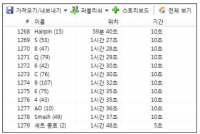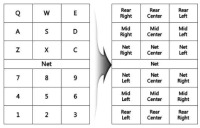Purpose This study examines the regional differences in fall-related physical fitness and fall experience characteristics between Korean and Japanese elderly people. Methods The study includes 176 elderly residents of Gifu(35 male, 73.5yrs; 141 female, 72.4yrs) and 147 residents of Ulsan(46 male, 75.6yrs; 101 female, 75.6yrs). One-legged stance, hand grip strength, knee extension strength, 10 m gait, timed up and go test, 30-s chair stand, sit and reach, and reaction time were measured to examine the fall-related physical fitness. A questionnaire survey was also conducted to investigate the characteristics of the fall experiences. Results The elderly in Ulsan experienced a lot of falls compared to those in Gifu. Many of the fallers in Ulsan have fallen forward due to tripping, and they have often fallen backwards by losing balance. In addition, 14% of them suffered a bone fractured. The one-legged stance, hand grip strength, 10m gait, timed up and go, 30-s chair stand, and reaction time of the elderly in Gifu were superior to those in Ulsan. Conclusion In order to reduce the fall rate through improvements to fall related physical fitness and the awareness of fall prevention, various professional fall prevention programs and policies should be proposed, and they should be implemented systematically for community living elderly people.

Purpose The purpose of this study was to investigate the changes of gait patterns and muscle activations according to dual tasks during stair ascending. Methods Twelve sedentary young male adults(Age: 27.0±1.8 yrs, Weight: 65.8±9.9 kg) without any lower extremity injuries participated in the study. Participants performed stair walking up 7 floors and their ascending motion on each floor was analyzed according to dual tasks. A wireless electromyography (EMG) were attached on the Rectus Femoris(RF), Biceps Femoris(BF), Gastrocnemius(GN), Tibialis Anterior(TA) muscle to calculate integrated EMG(iEMG) and co-contraction index(CI). Chest and left heel accelerometer signal were recorded by wireless accelerometer and those were used to calculate approximate entropy(ApEn) for analyzing gait pattern. All analyses were performed with SPSS 21.0 and for repeated measured ANOVA and Post-hoc was LSD. Results The results of this study indicated that dual task appeared to increase their time, CI and there were a statistically significant difference in most muscle on each floors compared to the non dual tasks. Also, ApEn were a statistically significant difference in only left and right direction than non dual task. Subjects showed more irregular pattern and instability muscle activation response during dual tasks. Conclusion Because there are many dangers often use of stairs in everyday life, in the future, we have to make a lot of efforts to prevent fall.


PURPOSE This study investigated the associations between physical fitness and fall efficacy with thigh circumference in elderly women with osteopenia/osteoporosis. METHODS A total of 166 female participants aged 76.3±5.0 years with –1.0≥T-score of femur neck bone mineral density were voluntarily recruited from local community centers. The participants were classified as low 25%, middle 50%, and high 25% groups based on their thigh circumference. Physical fitness measurements, including strength, flexibility, aerobic endurance, and balance were measured with a standardized protocol. The Korean version of the fall efficacy scale (K-FES) was used to assess fall efficacy. Logistic regression analysis was used to estimate odd ratio (OR) of poor physical fitness and low fall efficacy according to thigh circumference levels. RESULTS In terms of physical fitness, the middle 50% group (OR=0.430, 95% CI=0.194-0.953) and high 25% group (OR=0.129, 95% CI=0.049-0.343) had significantly higher linear trend for poor physical fitness compared to the low 25% group (reference), (p<0.001). In fall efficacy, the middle 50% group (OR=0.279, 95% CI=0.119-0.656) and high 25% group (OR=0.100, 95% CI=0.036-0.275) had significantly higher linear trend for low fall efficacy compared to the low 25% group (reference) (p<0.001). CONCLUSIONS The current findings suggest that maintaining high thigh circumference via regular physical activity and diet may contribute to attenuation of decreased risk for poor physical fitness and low fall efficacy in elderly women with osteopenia/osteoporosis.
PURPOSE This study aimed to analyze factors associated with physical activity (PA) in older adults based on social ecological theory. METHODS Secondary analysis was conducted using raw data from the 2021 Community Health Survey. after excluding 129 non-responses in the PA domain, a total of 74,363 individuals were included in the final analysis. A total of eight factors, including personal (level of depression, history of falls), relational (relationships with neighbors, living alone), community (satisfaction with the local community system, safety), and environmental factors (living environment, natural environment), were selected in accordance with the key points of social ecological theory. To analyze social ecological factors related to the PA of older adults, we conducted a decision tree analysis using Chi-square automatic interaction detection (CHAID). RESULTS The average PA level among older adults was approximately 136 minutes, but the mode and median were both 0 minutes. A total of 20.2% of older adults met the physical activity recommendations, while 79.8% did not. According to the first split of the decision tree, living alone was the most relevant factor associated with the PA of older adults, followed by depression and falls. Older adults living alone, with a depression score of 10 or higher, and who had experienced a fall within the past year, were least likely to meet the PA recommendations. CONCLUSIONS This study urgently suggests that PA programs should target older adults living alone, experiencing depression, and falls.

The research was a case study conducted in order to develop a new technique “YANG Hak Seon 2” for YHS athlete. A comparative kinematical three dimensional video analysis was performed with the use of high speed cameras. One successful trial and three of failure trials (T1: Falling backward while landing, T2: sitting reluctantly while landing, T3: Falling of sideways while landing). The result obtained from the study are as follows. Firstly when comparing the successful operation of the technique with failure trials, relatively higher landing angle was secured through increasing the thigh rotation and the body’s rotational velocity. Furthermore, despite increase in rotational velocity at twisting, stable landing was achieved through increasing the moment of inertia by spreading the left shoulder. Secondly, in case of failure trials while taking off the board, the thigh rotational angular velocity was comparatively less which ultimately affected the body position in the next phase of approach to the vault. Thus, due to the affected body position the athlete was not able to utilize the proper momentum of twist in positive direction Hence, it is considered that the velocity of center of mass might have also effected the operation not only the velocity while approaching the board.






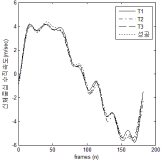



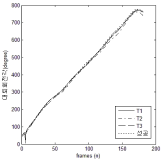

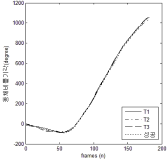


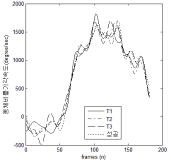
This article analyzes and compares the methodologies used in physical activity participation surveys from England, Australia, and South Korea. Specifically, it examines the “2021–22 Active Lives Adult Survey” from England, the “2021–22 AusPlay (15+)” from Australia, and the “2022 National Sports Participation Survey” from South Korea, highlighting both similarities and differences in their approaches. The analysis led to two key insights. First, there is a need to expand the scope of respondents in South Korea’s National Sports Participation Survey. Currently, the survey targets only 0.02% of the population aged ≥10 years, whereas the surveys in England and Australia gather data from a wider age range and more diverse regions. Therefore, South Korea should adopt online, postal, and mobile survey methods to widen the respondent pool and enhance the representativeness and reliability of the data collected. Second, South Korea needs to update its physical activity participation standards. The current benchmarks fall below international recommendations. Establishing new criteria that specify activity duration, intensity, and type is essential for effectively improving public health policies. The results of this study emphasize the importance of accurately assessing and enhancing physical activity participation in South Korea. These findings are expected to contribute to the development of effective sports policy standards in line with the World Health Organization’s global action plan.
PURPOSE This study aimed to present the measures necessary to perform well in tennis clubs by examining the adaptation process of the MZ generation participating in tennis clubs. METHODS A qualitative case study was performed and data was collected through in-depth interviews, direct observations, and literature surveys. The data were analyzed by applying pattern matching among the analysis methods proposed by Yin (2014), and the reliability and validity of the study were demonstrated by consultations between colleagues, reviewing members, and comparing and analyzing previous studies. The study participants were seven MZ generation tennis club participants selected through snowball sampling (one of the non-probability samples). RESULTS Achieving a level of skill that allows for compatibility and the effort required for it, the acceptance of differences in club culture and between generations, having the etiquette necessary for Generation MZ, and falling for the charm of tennis itself were identified as factors for successful participation in tennis clubs. CONCLUSIONS This study is expected to help the MZ generation, who have recently been interested in tennis, continue their participation, as well as lay a small foundation for the expansion of the base of the sport by detailing the measures necessary to successfully participate in tennis clubs.
PURPOSE This study aimed to a) develop suitable screening tools for identifying gambling severity in Korea and b) explore factors that affect the gambling severity index in order to prevent Korean sports betting users from easily falling into gambling addiction, thus providing practical and useful guidelines in this regard. METHODS This study examined Korean sports fans who had experiences of participating in sports betting (Sports Toto), a legal sports betting system in Korea. Toward this end, an online survey was conducted from May 10 to June 25, 2022. A total of 214 questionnaire results, excluding 23 who gave insincere and/or incomplete answers, were analyzed for normal distribution through skewness and kurtosis, and subscale scores were calculated after performing exploratory factor analysis and reliability analysis using Cronbach’s α. RESULTS A psychological gambling severity index and behavioral gambling severity index were developed based on a stepwise regression analysis, which was conducted using the demographic characteristics of domestic sports betting participants and their lifestyle habits (e.g., smoking and drinking, problem gambling severity index, self-control scale, and gambling expectation scale). CONCLUSIONS First, factors affecting the psychological gambling severity index were identified (having a job, job stability, and security) along with lifestyle habits (smoking and drinking). Second, gender, occupational characteristics, full-time employment, confidence in self-control, and desire for self-improvement were indicated as significant factors that influenced the behavioral gambling severity index.
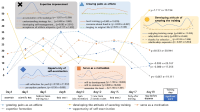
Purpose The current study aimed to identify national youth cyclist`s experience and change tendency of experience during camp training. Methods A total of 35 cyclists who participated in 2017 Korea youth national cycling camp training provided the data. The survey was conducted 9 times during the 20 days of camp training using open-ended questionnaire by diary method. The collected data were analyzed based on inductive categorization and response rates. This study was conducted in the order of formation rapport, data collection, and data analysis. Results Youth cyclists experiences during camp training to growing pains as an athlete, developing the attitude of savoring training, serve as a motivation, expertise formation and opportunity of self-examination. Based on the change in response frequency of the survey data, camp training experience falls into two categories: variable and invariable. Conclusions Youth national cyclist were growing their growth power through various experiences during the training camp, and these experiences changed to specific inflection points from the beginning to the end of the camp. Understanding changes in psychological experience can provide the design of timely psychological support and coaching method. This study will be used as a material for the design of the camp training program for the youth cyclist, as well as an opportunity to increase the interest of continuity reflection on the psychological experience.

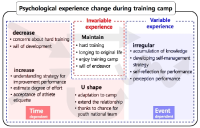

This study aims to visualize the data regarding the entire rally and the final 5 strokes in a badminton single match and to present its analysis method using the parallel coordinate system. For this study, were used the videos of three games of the final, semifinal, quarterfinal in the '2014 National Fall Badminton Championship’ where the L Player of Gyeonggi C university won championship. Herein, the data was collected utilizing a tagging technique of Dartfish (Ver 8.0), in terms of shuttlecock ball direction, judgment of final kill stroke, and used technique. The data collected were classified and condensed using Excel 2013 program, and the parallel coordinates, which is provided with free open source through D3js.org, was utilized as a data visualization tool. As the results; first, the entire rally of single matches in badminton was visualized; second, as an analysis method of data visualization in relation to final 5 strokes, game pattern analysis, attack success course analysis by players and techniques, attack failure course analysis by players and techniques, and a plurality of selected condition analysis by players and techniques could be presented. In future, when processing subsequent studies that can provide us together with numerically analyzed data as well as visualization through a parallel coordinate system, it is expected that this study could be applicable to a variety of events and utilized in the actual sports games.


